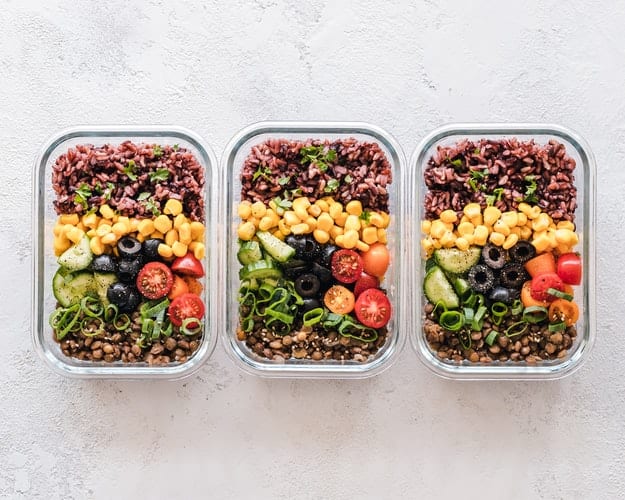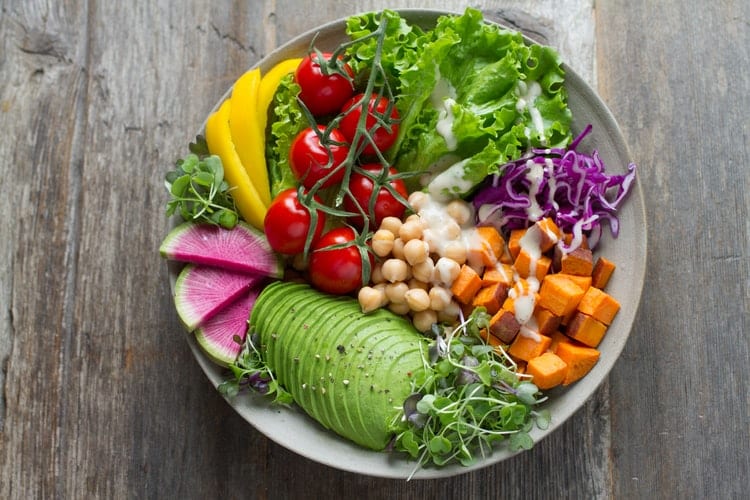Eating healthfully can be a confusing topic nowadays with strict fad diets, detoxes, fasts and other kinds of short term health kicks that don't last. What will last, as well as optimize health, are healthy habits. Here are a few to get you on the right track!
1. Eat real food

Eat real whole food: Fresh vegetables, fruits, beans, whole grains, nuts, seeds, herbs and spices, eggs, and lean animal protein like fish and chicken.
If it comes in a box, a package, or a can, avoid it. If buying prepackaged foods, read the labels and avoid foods that contain long lists of ingredients you don’t understand.
Shop local produce whenever possible, get fresh fruits and veggies from a reliable source. Stay away from the inner aisles of the grocery store.
When buying sauces and dressings keep a close eye on the ingredients and avoid things with corn syrup, oils and gums.
2. Have quality foods on hand

Often times meal prepping can seem daunting especially if you don’t do it frequently or have never done it before. In reality, an hour and a half spent in the kitchen on a Sunday can save you from making poor nutrition decisions throughout the week.
This does not mean you need to have breakfast, lunch and dinner all pre-portioned in individual containers (as seen on Instagram).
`Simply having some lean proteins like chicken or fish, healthy carbs like sweet potatoes or salads, and healthy snacks like fruits and veggies prepared and ready to eat can lead to better nutrition.
If working in an office or traveling, invest in a lunchbox in order to bring healthy foods with you and avoid eating out.
3. Avoid Dining out frequently

Dining at a restaurant makes choosing nutritious options difficult. Even food choices we believe to be healthy are often times prepared in a manner that adds calories.
Before going to a restaurant, it's always a good idea to look up the menu online and scope out your options. Many places nowadays list the calories and macronutrients in a meal, making it easier to keep track of your intake.
Another major reason to avoid eating at restaurants often is the unknown quality of ingredients used. It’s hard to determine the quality of the food being prepared if you don’t know where it came from.
And lastly, you do not have any control over the environment in which your food is prepared. Although there are health regulations for restaurants, there’s still a big question mark over the sanitation of the establishment behind the kitchen doors, and the wellness of the person handing your food.
4. portion control and MOderation

Aim to eat three square meals a day. When portioning out meals, aim for half the meal volume to be veggies, one quarter lean protein, and one quarter nutritious carbs.
Generally speaking, most individuals fare well consuming a 40% carb, 30% protein and 30% fat split. That means 40% of your daily caloric intake comes from healthy carbs, 30% from lean protein and 30% healthy fat. If you know you are sensitive to carbs and gain weight easily, swap carbs for protein: 40% protein, 30% carbs and 30% fat.
Do your best not to make two poor nutrition decisions back to back. For example, if I decided to have a donut with breakfast, I'm not going to have a slice of pizza for lunch. Don't let one tasty treat derail your entire day of eating. One cookie isn’t terrible, but the entire package is another story.
When in doubt, keep it simple! Eat real food wherever you are and be mindful of moderation. Eating healthy doesn't have to be complicated, and mastering these simple concepts will get you a long ways on the road to success.